iPad mini Review
by Anand Lal Shimpi & Vivek Gowri on November 20, 2012 6:10 PM ESTDesign & Smart Cover
The smaller screen of the mini is joined by the super-slim industrial design from the fifth generation iPod touch that debuted a couple of months ago. I’m actually a pretty big fan of the direction Apple’s mobile design teams have taken recently, the overall visual style is much cleaner and focused now, with less pronounced radiusing and more rectangular profiles across the board. The edges are rounded enough for a very smooth in-hand feel, but the front edge has the same highly polished, chamfered ring around the bezel as the iPhone 5.
The dark monochromatic look is very sleek; combined with a brightly colored Smart Cover like the red one, the effect is pretty striking. The white/silver colour scheme, as on the iPhone 5, is elegant, but nowhere near as visually striking as the uniformly dark mini.
The face should be very familiar to iDevice users - a front facing camera centered at the top, an ambient light sensor to the left of it, and a home button at the bottom. The home button has been shrunk, though it’s set far enough away from the screen that I feel like they could have easily kept the same home button that is used in the other iDevices. I’m assuming there’s a reason for the downsizing, probably relating to the placement of the hardware around the display, because this isn’t the type of thing typically overlooked by Jony Ive and Co.
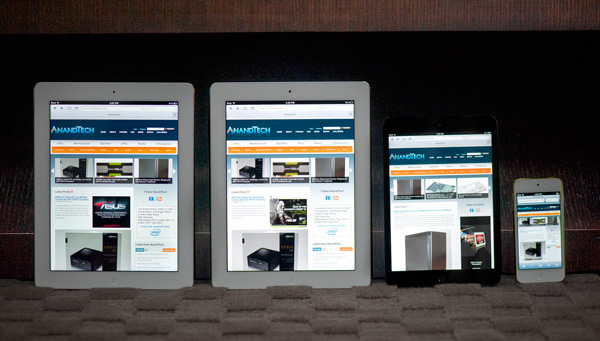
From left to right: iPad 4, iPad 2, iPad mini, iPod Touch (5th gen)
The bezel has been reduced considerably in size in all four directions, but more so on the sides than to the top and bottom. The result is a device with a slightly different physical aspect ratio than the 9.7” iPad - 4.45:3 instead of 3.90:3 (where, in both cases, the display has an aspect ratio of 4:3). The narrower bezel looks good - cleaner and more modern, and I think the iPad mini is better proportioned aesthetically. Of course, the smaller footprint is also one of the main factors in the awesome in-hand feel, so it’s a functional decision as much as an aesthetic one. Surprisingly enough, the lack of bezel on the sides of the mini doesn't impact normal use. Apple tweaked iOS a bit to improve touch rejection along the edges of the mini.
Button and port placement is identical to the preceding iPads, with a few minor but important changes. The silence/rotation lock slider in particular feels much more robust than in previous editions. The top edge has the power button on the right and headphone jack on the left, with volume buttons on the right edge, next to the camera. The buttons themselves are now metal, and offer better feel and feedback than the plastic buttons of the 9.7” iPad.
Coming around the edge to the bottom, we see that the 30-pin dock connector has been replaced by the new Lightning port, centered as always. The mono speaker in the right corner of the back is now gone, superceded by a pair of speakers set on either side of the Lightning port. That’s right - the iPad finally has stereo speakers, and they’re actually pretty decent. Clean sound output, and loud enough to fill a 400 sq ft room without distorting at high volumes. As with most mobile devices, the sound is a bit thin, but a decent improvement over my admittedly low expectations.
Given that the iPad mini shares the same colors and materials as the iPhone 5, I was curious to see whether the paint would be as fragile and whether we’d see a repeat of the quality control issues Apple had with it at launch. Thankfully, the anodization seems far more robust and significantly more resistant to scratching, even on the polished aluminum band at the front. I didn’t see any material or paint defects when I unboxed it, even after a thorough going over, and through two weeks of not particularly gentle use, I haven’t seen any scratching. It’s a very different experience than my iPhone 5, which came out of the box with the front panel not properly clipped into the aluminum frame and scratched whenever I looked at it wrong. This isn’t a device that needs any other kind of case unless you plan on abusing it, and I feel like a larger case would undo some of the benefit of the ultralight chassis.
Apple does built a custom Smart Cover for the mini, available in a number of colors. Unlike the bigger Smart Cover, the mini's cover integrates the magnetic hinge into the same material as the rest of the cover, resulting in a very cohesive design:
The big benefit of the Smart Cover is the ability to use it as a stand:
The angle of the folded Smart Cover is considerably larger than on the standard iPad, making the iPad mini lean back more vs. standing upright on the bigger model:
I would recommend getting a Smart Cover for the versatility of the stand and to have some form of protection for the screen. Plus, the black iPad mini + red Smart Cover combination just looks awesome.


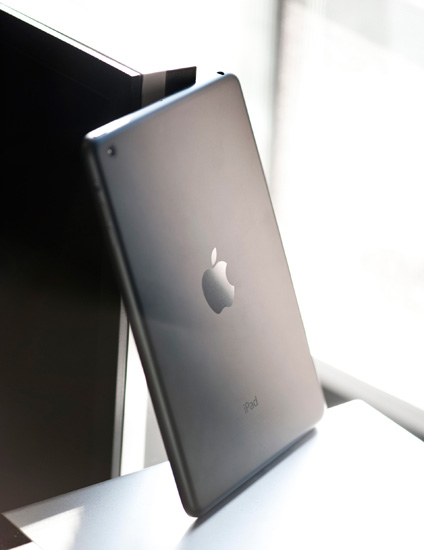
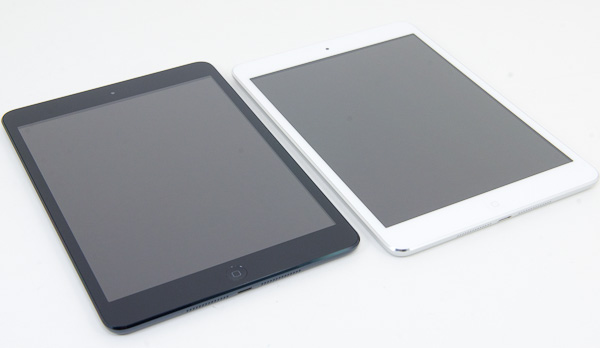
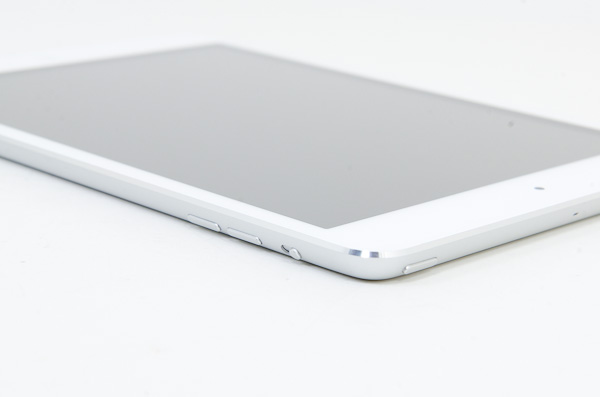
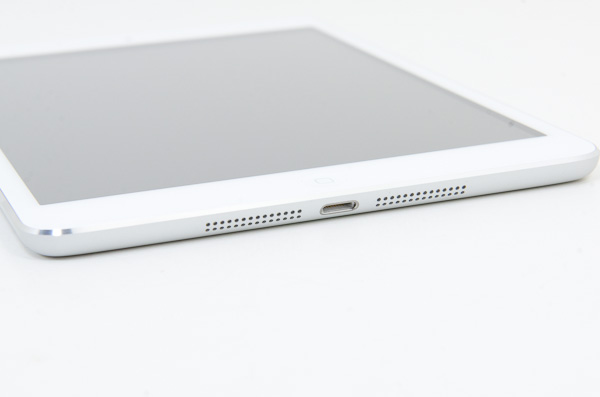
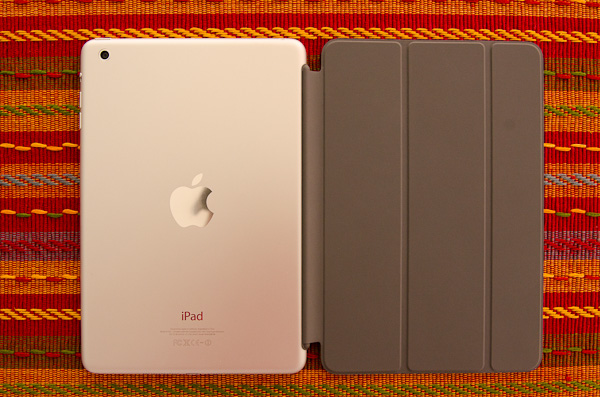
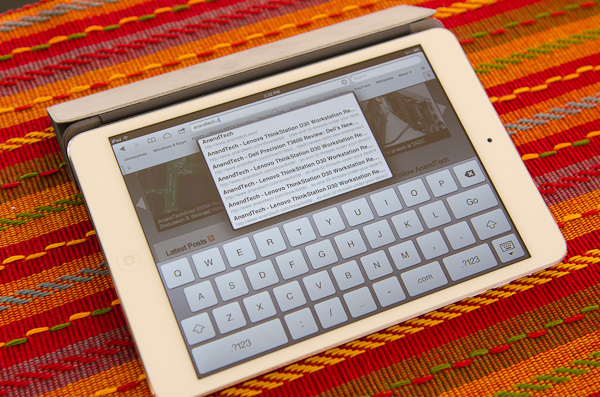
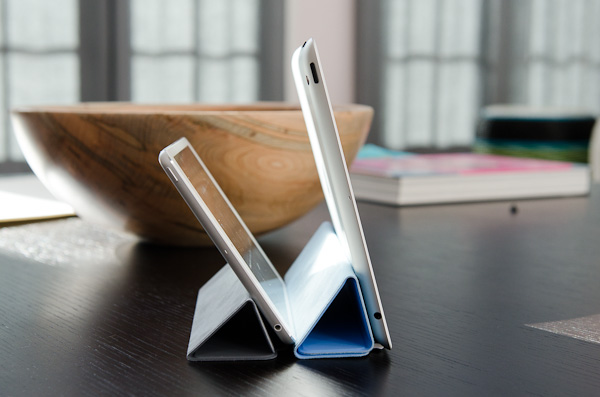








140 Comments
View All Comments
menevets - Friday, November 23, 2012 - link
I own an iPad and debated between the Mini and the Nexus 7. I went with the Nexus 7.Without rooting, I can copy files from camera to external hard drive without resorting to wifi or buying anything extra. GPS, turn by turn voice navigation, offline maps, easy integration with Google tools like Mail, Picasa Web, YouTube, etc... I can see why someone would want a wider screen, but the narrower N7 can fit in more pockets and make for easier holding on the train. And in general, there is much more detail in settings.
The N7 is sorely missing a rear facing camera. I like to photograph articles, documents, basically text. The 1.2 megapixel front facing camera is not enough to capture text clearly. The build quality is a little suspect, for example, the screen lifting problem.
Jelly Bean, in general, may be more buttery smooth than its predecessors, but it is much easier navigating iOS, selecting text, scrolling, etc... iOS is much more responsive.
Obviously iOS app selection is better, but I notice that Android equivalent apps are not as good. For example, the Kindle app on iOS, when you highlight a word on the bottom of the screen, the definition appears on the top, which allows you to alter the highlighting selection. The Android version, the definition covers the bottom so you can't change the highlighting selection. I noticed other instances of how the iOS app works better than its Android equivalent. Dropbox, Evernote for example.
Google Play has a limited selection of movies and tv shows compared to iTunes/Amazon.
So my use case for the big iPad is reading music scores from the piano, reading books with complex formatting, reading novels at home - fewer page turns, videos and apps I can't get on Android. The N7 for everything else.
So the above N7 drawbacks for me are well worth the $130 savings.. Hope this helps others in their decision.
Rodney McKay - Friday, November 23, 2012 - link
I went to an Apple store today (Black Friday) planning to buy a 4th-gen iPad on sale. Though I hadn't yet seen a mini, I dismissed it out of hand because I "wanted a retina display". It happened that there was a mini next to a iPad 4 on display, so I compared them. The resolution difference wasn't really obvious to me (after all, the mini has a higher pixel density than the iPad 2), and in reading text (web pages, for example) I felt no clear preference. The mini's display was somewhat yellower/warmer than the 4's, which I didn't much care for. However, I opened Apple Maps on both, and was shocked to see that that the mini had a MUCH clearer display than the 4. On the mini, the smallest streets were clear at the zoom level where they appeared, but on the 4 they were so washed out as to be almost invisible. And in pretty much every other respect, the mini's Maps display looked better. I spent half an hour mucking with brightness and zoom levels trying to equalize the displays for a fair test, but no matter what I did the mini display was dramatically better.So, I tried an iPad 2 next to a 4, and got exactly the same results. The 2's display looked very much like the mini's (albeit larger), with map details much clearer than on the 4 (a *different* 4 from the one I compared to the mini, so this wasn't just a sample glitch with that particular iPad). I called over a store rep and showed him my results. He said "Hmm... but the Retina Display is better on things like photos and videos. Watch..." and he brought up the same sample image on both. We were both surprised to see that the image on the 2 was again dramatically nicer (less washed out, in particular) than on the 4, and at that point I realized that the real difference is that the 4's display has rather poor contrast (for which there is no adjustment), which would account for all the differences I observed.
I very much prefer the Retina Display on my iPhone 4s (and my wife's 5) over the previous ones, but on the iPads it seems to be significantly flawed (at least with the two samples I tried). I left the store with an iPad mini, even though it was the only iPad not on sale today.
I have a feeling that iPad reviewers haven't really been doing side-by-side comparisons between models. I dread the day when the iPad mini gets "upgraded" with a Retina Display--maybe I'll stock up on them now.
SanX - Sunday, November 25, 2012 - link
ROTFL go to the eye doctorusually only technical illiterates or salespeople having merchant interest write such bs
miatadan - Saturday, November 24, 2012 - link
I had the iPad 2 for a while and sold it as too large to take it with me daily. I purchased the wifi 32GB black model.It is the apps available for iOS that make the iPads attractive. I use n-Stream for Naim network player, use it as remote with Logitech app. Skype works well, Textplus for free texting nice.
I tried Rim blackberry playbook, liked actual hardware but no apps I could use....
Even with Targus case Mini iPad fits inside pocket of winter jacket when walking, hopefully once summer comes around I find summer jacket with large enough inside pocket.
Regular iPads at work feel heavy now compared to Mini, so I agree with Anand.
SanX - Sunday, November 25, 2012 - link
You wrote "It pains me to say it, but compared to most similarly priced notebooks, the iPad mini's display is amazing."Should be "It pains me to say it, but compared to most similarly priced notebooks, the iPad mini's display is amazing trash. I really do not know what's went wrong with Apple and in which city dump near Cupertino they found such display"
jameskatt - Sunday, November 25, 2012 - link
The problem of going the Full Retina Display Route is that that is an even ultra higher resolution than the iPad 3-4. And the battery and GPU needed would make it heavier, larger, and more expensive. This is thus not the route.Apple can more easily make the iPad Mini like the iPhone 5: increasing the vertical resolution and not forcing existing apps to rerender. They just keep working as before but with letter-boxing. This solution would increase the resolution so it is Retina-like and would work with existing apps.
MobiusStrip - Monday, November 26, 2012 - link
Another idiotic glossy screen.iSee - Monday, November 26, 2012 - link
These are also all reasons the iPad and iPhone can't have retina displays.Hm.
Alex Veit - Wednesday, November 28, 2012 - link
If you give someone $5 they will ask "why didn't you give me" $10.Just the fact that most applications that a few years ago could only be performed on a desktop or laptop are now being implemented in handheld devices is freaking awesome!!
who cares about the minor dimension differences in between the devices.
By the way, if you own an iPad and you want to get the most out of it http://d7a79zq53j51xd1830fjvzkexx.hop.clickbank.ne...">Click
here to get some awesome stuff.
EarthCore - Thursday, May 30, 2013 - link
AnandTech "unbiased" tests always seem to be skewed toward Apple. The Nexus 7 can easily get 13+ hours runtime looping a 720p movie:http://forum.xda-developers.com/showthread.php?t=2...